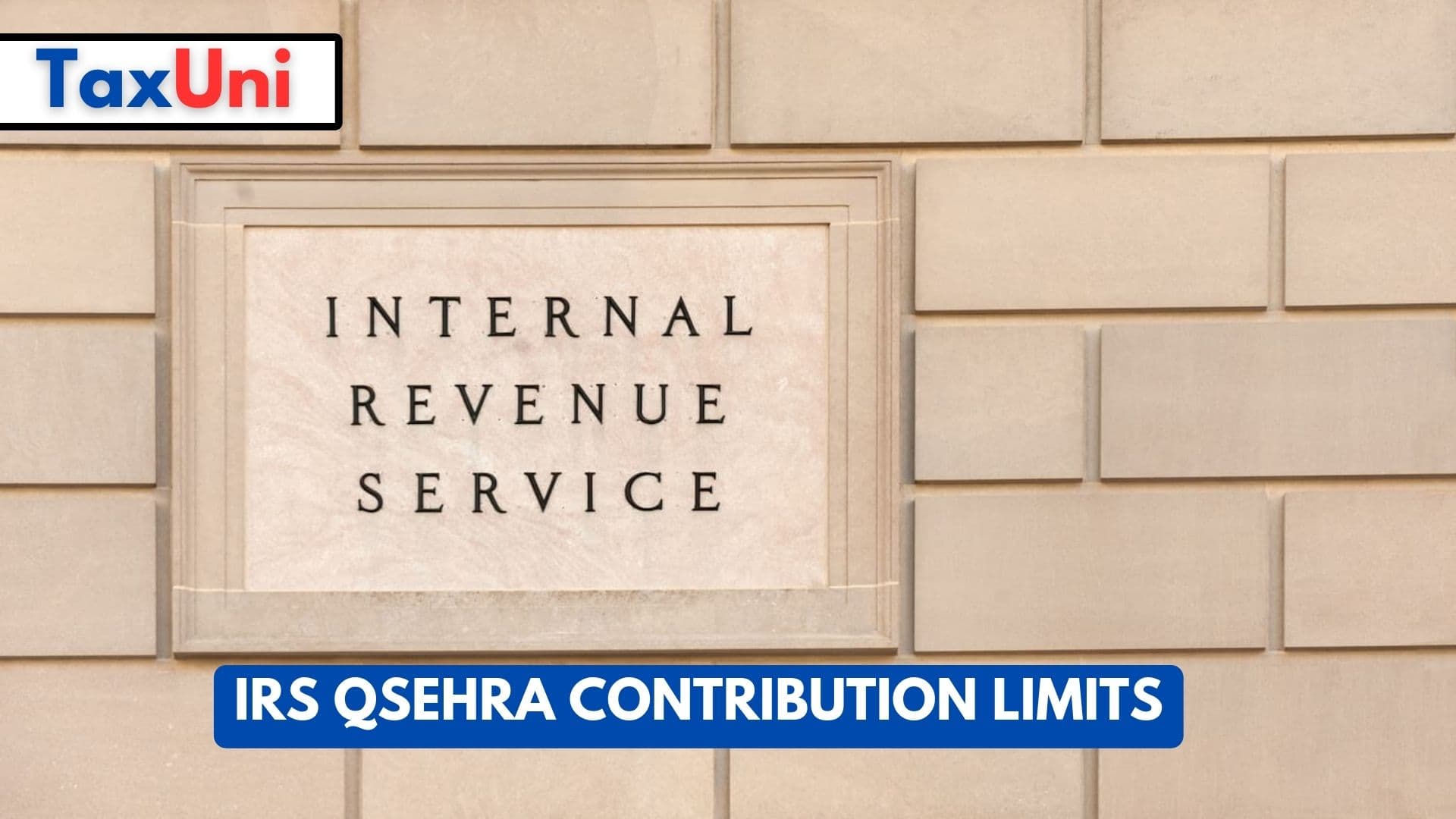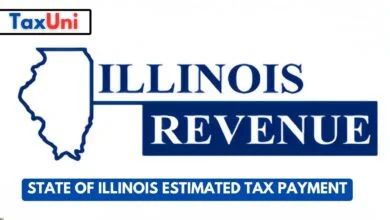IRS QSEHRA Contribution Limits
Offering a QSEHRA can be a great option for small businesses that are struggling with high-cost group health insurance. However, the IRS sets limits for the maximum reimbursement allowance, and employers must follow certain guidelines to avoid penalties. In addition, substantiation of medical expenses is required.

Contents
The IRS recently released its 2023 inflation-adjusted QSEHRA Contribution Limits for health FSAs, commuter benefits, adoption assistance, and QSEHRAs. The limits are slightly higher than last year. This is due to the chained CPI adjustment, which takes into account substitution effects, such as when consumers replace a good that costs more (such as beef) with one that is cheaper (like chicken).
If the maximum QSEHRA limit is not sufficient for your business, you can consider an alternative type of HRA called the Individual Coverage HRA that does not have contribution limits. However, you must keep in mind that this option is only available to small businesses. For 2025, the IRS QSEHRA Contribution Limits are $5,850 for a single employee ($487.50 per month), and $11,800 for family coverage ($983.33 per month). A QSEHRA can also allow unused amounts to roll over from month-to-month, but this must be clearly communicated with employees and documented in the plan documents. In addition, the ACA requires employers to report and pay an annual fee for the Patient-Centered Outcomes Research Institute (PCORI) based on the maximum contribution amount of their QSEHRA.

QSEHRA Eligibility Requirements
QSEHRAs are available to small businesses that employ fewer than 50 full-time equivalent employees and don’t offer a group health plan or FSA. The employer must also be an ALE and meet other requirements. The QSEHRA cannot be combined with any other group health plan or FSA. This includes FSAs that cover deductibles and limited-purpose FSAs that only reimburse certain types of expenses. This restriction is in place to prevent employers from combining their health reimbursement accounts with other benefits, such as health insurance. This could be seen as a violation of the ACA’s mandates and penalties.
What Can Be Reimbursed From QSEHRA?
Generally, you can reimburse employees up to their accrued monthly allowance. You can also choose to reimburse them for insurance premiums only or both premiums and medical expenses. In addition, you can choose to vary the allowances for different ages.
You can also allow employees to roll over unused allowances from one year to the next. But, the total amount of these unused funds can’t exceed the IRS limit for the new plan year. It’s also important to communicate with your employees about the QSEHRA. You must notify them in writing of the dates when the plan will begin and end and what expenses they can expect to be reimbursed for.

QSEHRA vs. ICHRA
QSEHRAs have strict annual contribution limits and require carryover. They are also limited in how they can vary allowance amounts for different employees, such as age and family size. In contrast, ICHRAs don’t have these restrictions and allow the employer to set their own budget.
| Aspect | QSEHRA | ICHRA |
|---|---|---|
| Employer Eligibility | Small employers with fewer than 50 full-time employees; not offering group health insurance | Any employer, regardless of size, can offer ICHRA as long as they don’t offer a traditional group health plan to the same employees. |
| Maximum Contribution Limit | Yes, there are annual limits set by the IRS. | No maximum contribution limits. |
| Allows Premium Reimbursement | Yes, for individual health insurance premiums. | Yes, for individual health insurance premiums. |
| Eligible Expenses | Premiums and qualified medical expenses as defined by the IRS. | Premiums and qualified medical expenses, unless employer specifies otherwise. |
| Employee Eligibility Requirements | All full-time employees are generally eligible unless the employer defines differently. | Employers can set eligibility based on different classes of employees (e.g., full-time, part-time, seasonal). |
| Coordination with Premium Tax Credit | Employees can’t take full advantage of both QSEHRA and Premium Tax Credit (PTC). | Employees can choose between ICHRA and PTC, but can’t benefit from both. |
| Employee Proof of Coverage | Employees must provide proof of minimum essential coverage. | Employees must provide proof of individual health insurance coverage. |
| Geographic Variances | No ability to vary reimbursements based on geographic location. | Can vary reimbursements based on geographic location. |
| Age Variances | No ability to vary reimbursements based on age beyond a factor of 1:3. | Can vary reimbursements based on age. |
| Integration with Group Health Plans | Cannot be offered in conjunction with group health plans. | Cannot be offered to the same employees receiving a group health plan. |
QSEHRA vs. HSA vs. FSA
A QSEHRA differs from a Health Savings Account (HSA) or Flexible Spending Account (FSA) in that it is not an account but an arrangement. This means that employers keep the money they use to reimburse employees until an employee requests a reimbursement. Some employers create a separate bank account to manage the QSEHRA, but it is not required. Generally, reimbursements are made through payroll in the same manner as other expenses like office equipment or travel expenses.
| Aspect | QSEHRA | HSA | FSA |
|---|---|---|---|
| Eligibility | Small employers with fewer than 50 | Must be enrolled in a High | Any employer can offer an |
| full-time employees; not offering group | Deductible Health Plan (HDHP) | FSA. | |
| health insurance. | |||
| Contribution Source | Employer only. | Employer and/or Employee. | Employer and/or Employee. |
| Contribution Limit | Yes, set annually by IRS. | Yes, set annually by IRS. | Yes, set annually by IRS. |
| Roll Over | Unused amounts can be rolled over | Unused funds roll over and | Typically use-it-or-lose-it, but |
| to the next year. | accumulate year to year. | some plans allow $550 rollover or | |
| a 2.5 month grace period. | |||
| Tax Advantages | Employer contributions are tax-free. | Contributions are tax-deductible. | Contributions are pre-tax. |
| Employee reimbursements are tax-free | Withdrawals for qualified medical | Distributions for qualified expenses | |
| for qualified expenses. | expenses are tax-free. Earnings | are tax-free. | |
| are tax-free. | |||
| Qualified Expenses | Premiums and medical expenses as | Qualified medical expenses. | Qualified medical expenses. |
| defined by IRS. | Can also be used to pay premiums | Cannot be used for insurance | |
| once on Medicare or for COBRA. | premiums. | ||
| Investment Options | N/A | Yes, funds can be invested and | N/A |
| grow tax-free. | |||
| Coordination with Other Accounts | Can be offered alongside FSA and HSA | Can be paired with FSA but only | Can be paired with HSA but only a |
| but coordination rules apply. | a limited-purpose FSA that covers | limited-purpose FSA that covers | |
| dental and vision expenses. | dental and vision. | ||
| Account Ownership | N/A (employer-sponsored benefit). | Employee-owned; portable between | N/A (employer-sponsored benefit). |
| jobs. |





